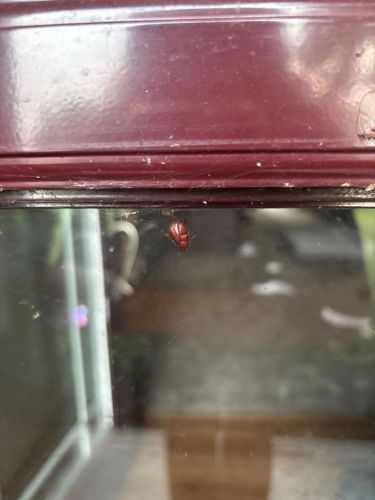Carpet Beetle (likely Varied Carpet Beetle or Furniture Carpet Beetle)
Scientific Name: Likely *Anthrenus verbasci* (Varied Carpet Beetle) or *Anthrenus scrophulariae* (Common Carpet Beetle) or *Anthrenus flavipes* (Furniture Carpet Beetle)
Order & Family: Order: Coleoptera, Family: Dermestidae
Size: Adults typically range from 2 to 4 mm in length.

Natural Habitat
Indoors, they are commonly found in dark, undisturbed areas such as closets, attics, under furniture, in carpets, rugs, upholstered furniture, and around baseboards. Outdoors, adult carpet beetles are found on flowers, feeding on pollen.
Diet & Feeding
Larvae of carpet beetles feed on a wide variety of animal-derived products, including wool, silk, fur, feathers, leather, felt, animal carcasses, dried pet food, and sometimes plant-based materials like grains and cereals. Adult carpet beetles feed on pollen and nectar outdoors.
Behavior Patterns
Carpet beetles often lay eggs in natural fibers or animal products. Larvae are the most damaging stage, feeding on keratin and chitin. Adults are attracted to light and often found near windows. They can undergo multiple generations in a year, especially in warm indoor environments.
Risks & Benefits
Risks: Carpet beetles are common household pests that can cause significant damage to natural fibers (e.g., wool, silk, fur, leather) in clothing, carpets, furniture, and museum specimens. They do not bite humans but can cause allergic reactions (dermatitis) in some individuals due to contact with their larval hairs. Benefits: In nature, they play a role in decomposition by breaking down animal remains.
Identified on: 8/12/2025